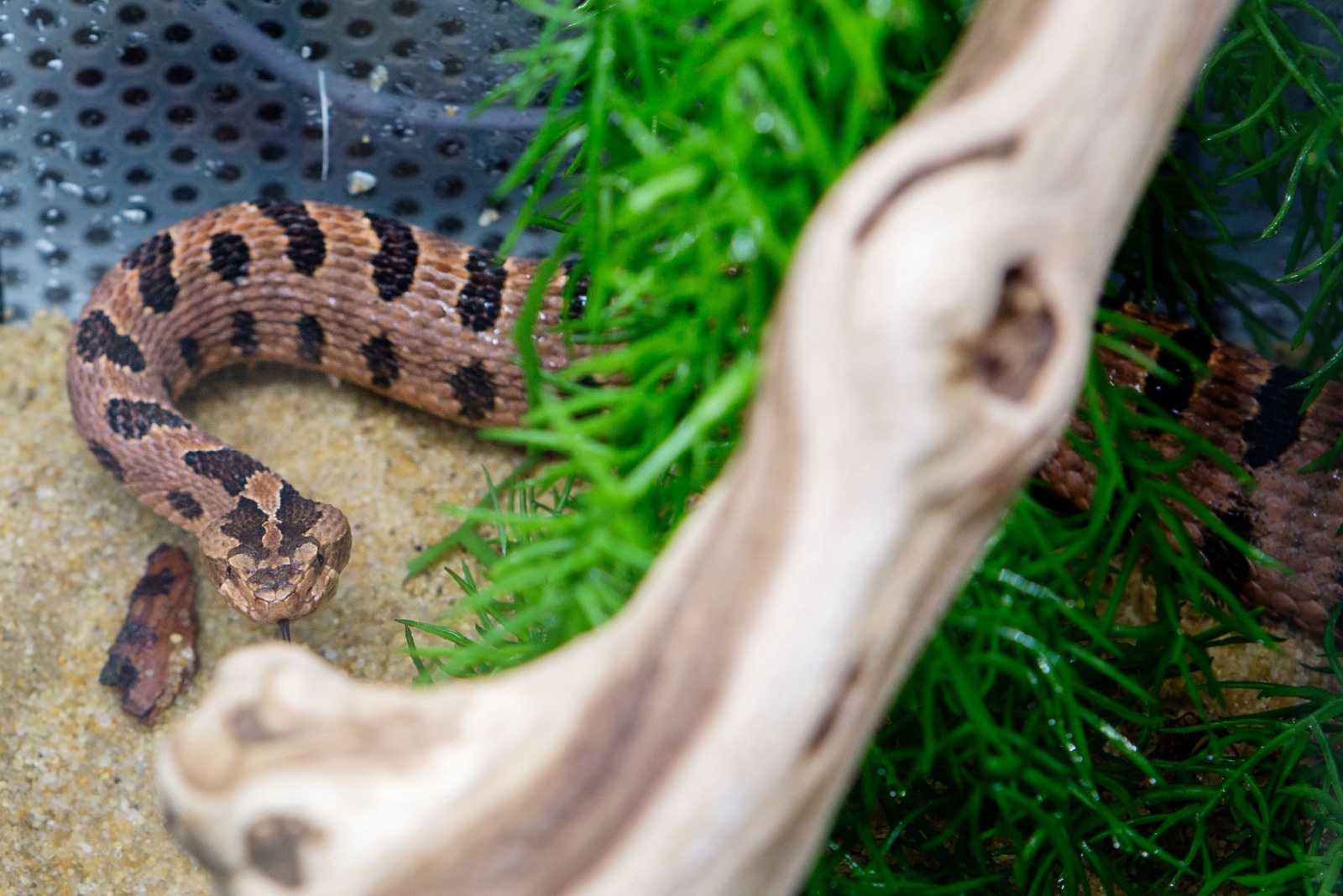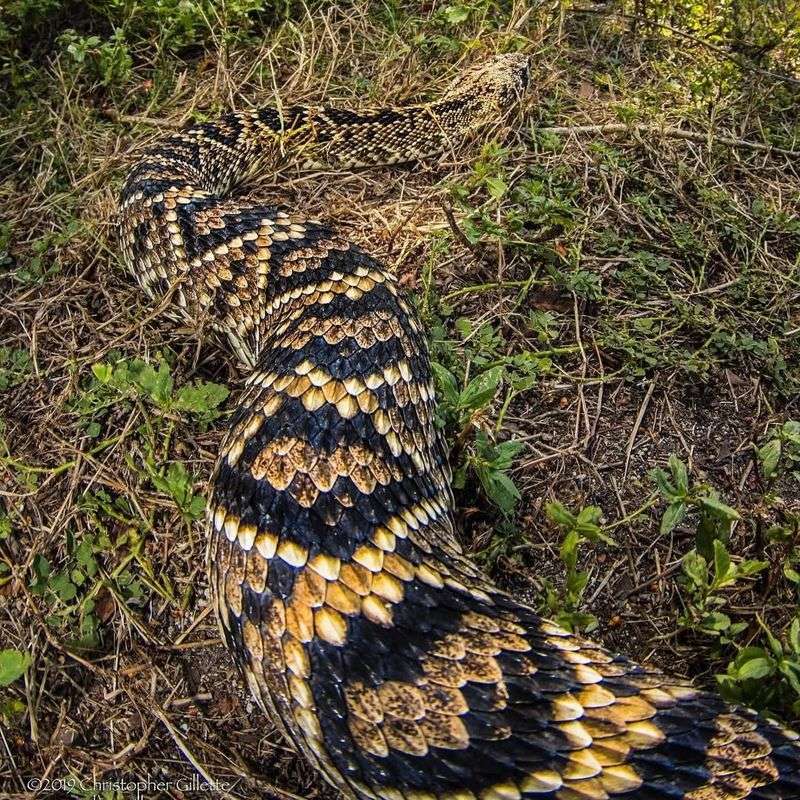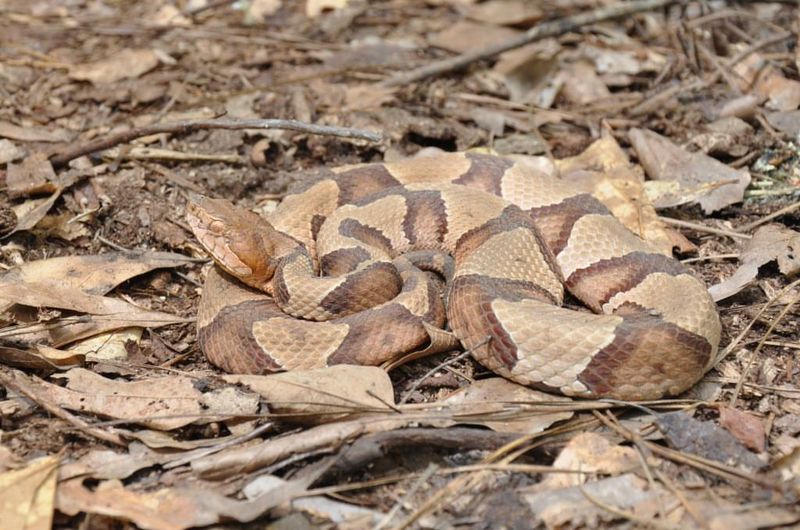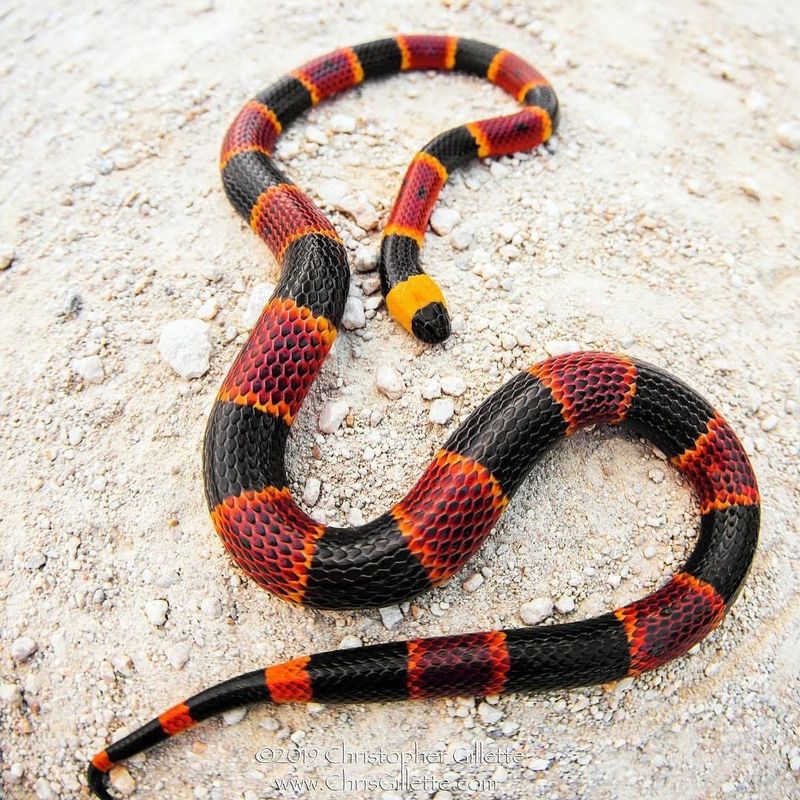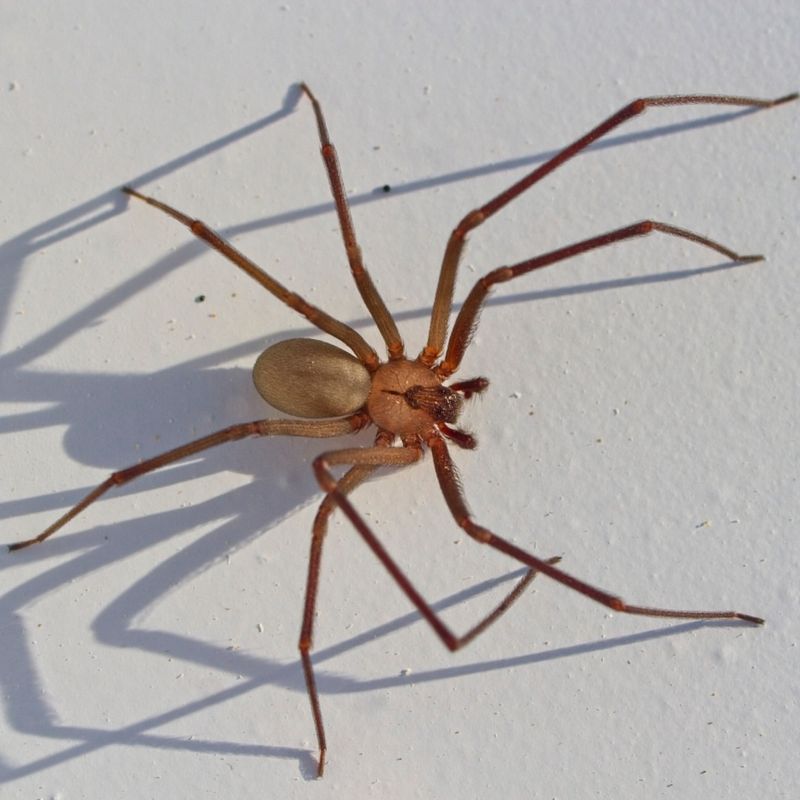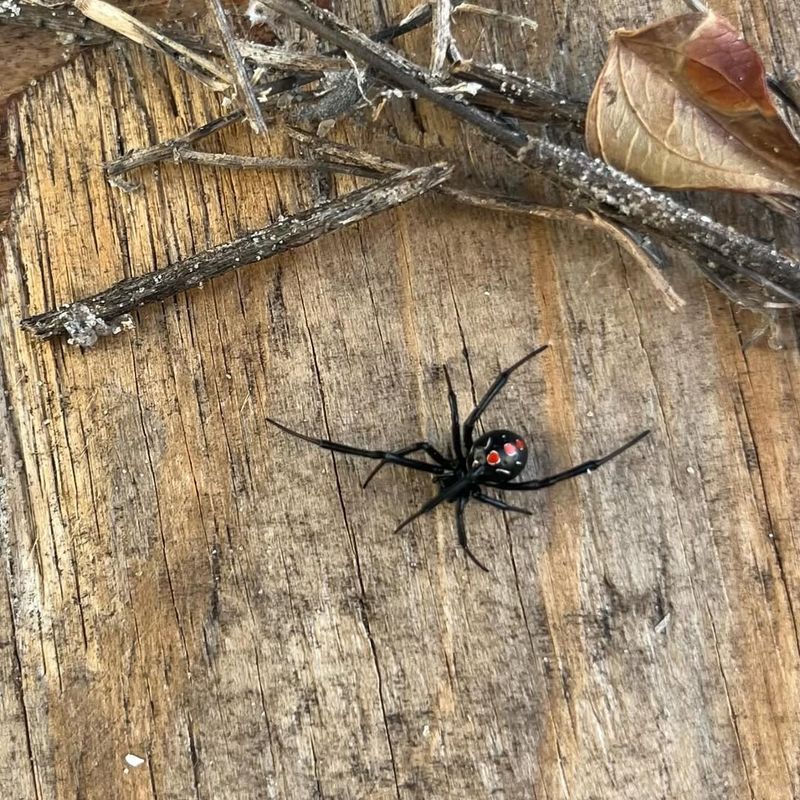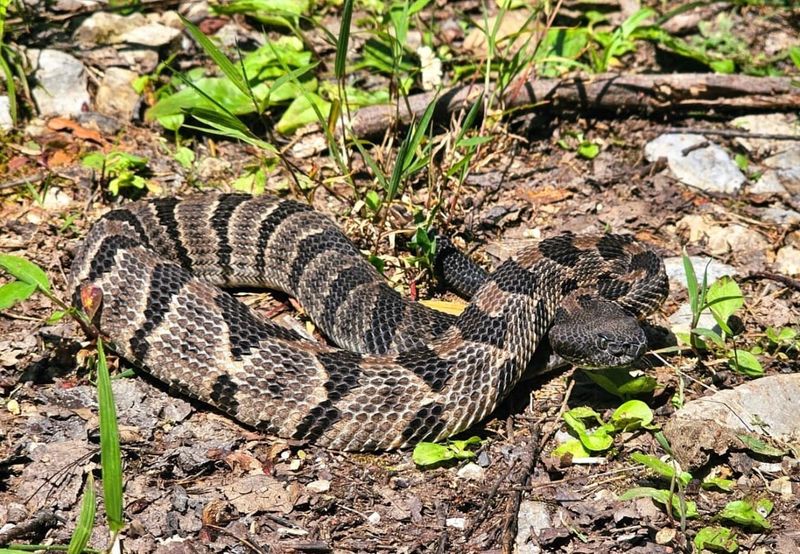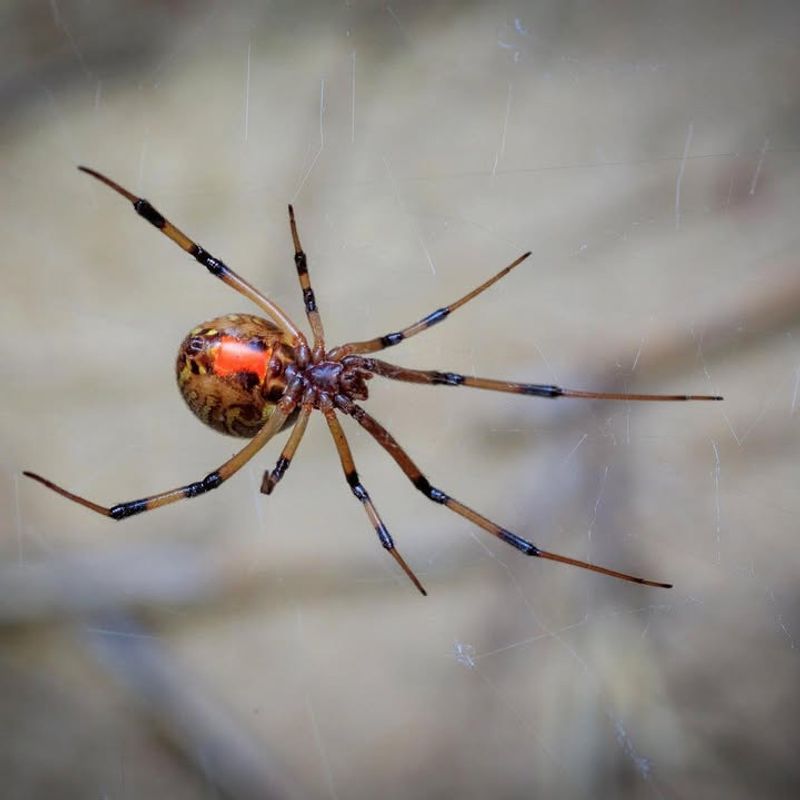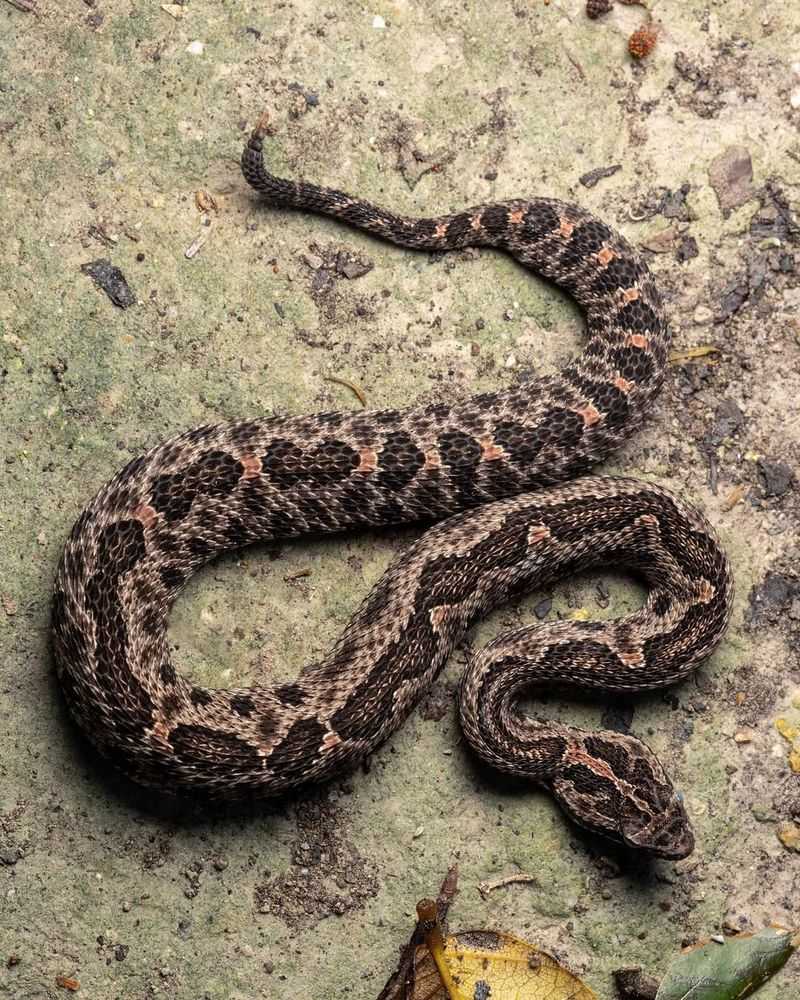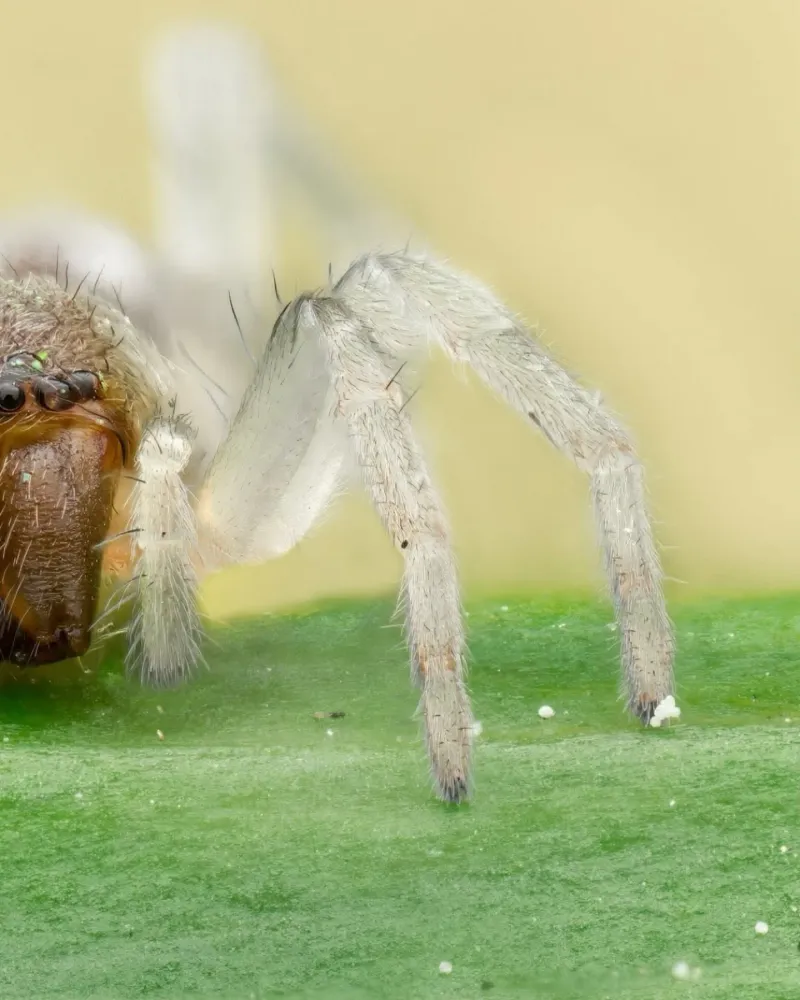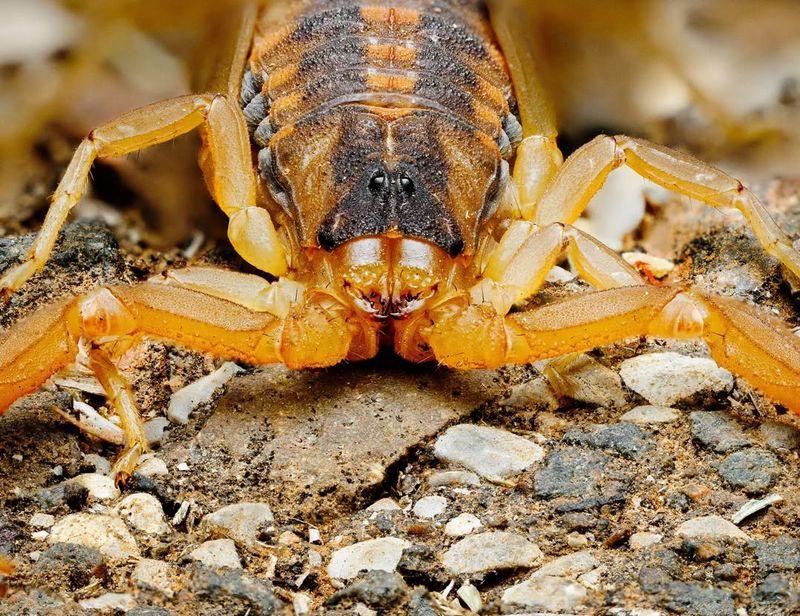Louisiana’s rich wetlands and warm climate make it a haven for biodiversity—but that beauty also hides a few hazards. Several venomous species thrive across the state, from snakes and spiders to marine life in the Gulf.
While encounters are rare, being able to identify these animals helps prevent panic and promotes coexistence. Awareness, after all, is the first step to safety.
1. Eastern Diamondback Rattlesnake
With a rattle that sounds like nature’s own alarm system, this heavyweight serpent commands respect wherever it slithers. Growing up to seven feet long, it’s the largest venomous snake in North America and sports gorgeous diamond-shaped patterns along its back.
Found mainly in Louisiana’s pine forests and coastal areas, this reptile prefers keeping to itself. If you hear that distinctive buzzing sound while hiking, freeze and slowly back away. Most bites happen when people accidentally step too close or try handling them.
2. Copperhead Snake
Masters of disguise, copperheads blend so perfectly with fallen leaves that you might walk right past one without noticing. Their copper-colored heads and hourglass-shaped bands create natural camouflage that’s almost magical.
These snakes prefer wooded hillsides, rocky areas, and old sawdust piles around Louisiana. They’re generally less aggressive than other venomous snakes but will strike if stepped on. Wearing boots while hiking dramatically reduces your risk. Did you know copperheads actually smell like cucumbers when threatened? That’s one warning sign worth remembering during your outdoor adventures.
3. Coral Snake
Red touches yellow, kills a fellow—this old rhyme helps identify one of Louisiana’s most beautifully dangerous creatures. Coral snakes sport bright bands of red, yellow, and black that warn predators to stay away.
Unlike their venomous cousins, coral snakes are shy and secretive, spending most time underground or beneath debris. They rarely bite humans because their small mouths make it difficult. However, their venom is extremely potent, affecting the nervous system. If you spot one, admire its beauty from a safe distance and never attempt to handle it, even if it seems calm.
4. Brown Recluse Spider
Sporting a violin-shaped marking on its back, this spider lives up to its reclusive name by avoiding human contact whenever possible. It’s about the size of a quarter and prefers dark, undisturbed spaces.
You’ll typically find brown recluses hiding in closets, attics, basements, or storage boxes throughout Louisiana homes. Their bite can cause tissue damage that takes months to heal. Shake out shoes and clothing that’s been stored away. Wearing gloves while cleaning cluttered areas provides extra protection. Most bites occur when people accidentally trap the spider against their skin while dressing or sleeping.
5. Black Widow Spider
That shiny black body with a crimson hourglass underneath makes this spider instantly recognizable and rightfully feared. Female black widows pack venom fifteen times stronger than a rattlesnake’s, though they inject far less.
Common around Louisiana woodpiles, sheds, garages, and outdoor furniture, these spiders build messy, irregular webs close to the ground. Males are harmless and much smaller. Only females bite, and they’re not aggressive unless protecting egg sacs. Check before reaching into dark corners or underneath outdoor items. Symptoms include severe muscle cramps, sweating, and nausea requiring immediate medical attention.
6. Timber Rattlesnake
Sporting chevron-shaped bands and a rusty stripe down its back, this rattler blends beautifully with Louisiana’s forest floors. It’s more docile than its diamondback cousin but equally deserving of caution.
Timber rattlesnakes prefer higher elevations and rocky, wooded areas in northern Louisiana. They’re ambush predators that can remain motionless for days waiting for prey. During spring and fall, they migrate between summer hunting grounds and winter dens. Hikers should stay on cleared trails and avoid reaching onto rock ledges without looking first. Their venom destroys tissue and affects blood clotting, making quick medical treatment essential.
7. Brown Widow Spider
A newer arrival to Louisiana, brown widows have been spreading across the state since the early 2000s. They’re less aggressive than black widows but still pack a venomous punch worth avoiding.
These tan or gray spiders sport an orange or yellowish hourglass instead of red. Their egg sacs look like tiny spiky balls, quite different from black widow’s smooth ones. Brown widows prefer human structures like mailboxes, lawn furniture, and playground equipment. While their venom is actually more toxic, they inject less and bite less frequently. Regular inspection and cleaning of outdoor items discourages them from setting up house near yours.
8. Pygmy Rattlesnake
Don’t let its adorable size fool you—this pint-sized rattler means business! Measuring just fifteen to twenty inches, it’s Louisiana’s smallest venomous snake but compensates with a feisty attitude.
Pygmy rattlesnakes inhabit pine flatwoods, sandhills, and mixed forests throughout Louisiana. Their tiny rattle sounds more like an insect buzz than a warning, so it’s easily missed. They’re often gray with dark blotches and a reddish stripe down their back. Though their venom is less dangerous than larger rattlesnakes, bites are still painful and require medical attention. Children playing outdoors should learn to recognize and avoid them.
9. Yellow Sac Spider
Pale yellow or beige with dark feet, these small spiders are common household visitors throughout Louisiana. They don’t build traditional webs but create silken sacs in corners or behind objects.
Yellow sac spiders are nocturnal hunters that wander at night searching for prey. Most bites happen when they hide in bedding, clothing, or shoes and get pressed against skin. Their venom causes painful welts and sometimes necrotic wounds, though less severe than brown recluse bites. Sealing cracks around windows and doors reduces indoor populations. Shaking out clothes and checking shoes before wearing them prevents most encounters with these nighttime wanderers.
10. Striped Bark Scorpion
Louisiana’s only scorpion species might surprise folks who think these arachnids only live in deserts. Sporting dark stripes down its back, it’s perfectly adapted to the state’s humid environment.
These scorpions hide under bark, rocks, and lumber during daytime, emerging at night to hunt insects. They’re excellent climbers and sometimes enter homes through tiny cracks. While their sting is painful and causes swelling, it’s rarely dangerous to healthy adults. Children and people with allergies should seek medical attention after stings. Using a blacklight flashlight makes them glow bright blue-green, helping you spot them during nighttime outdoor activities.

